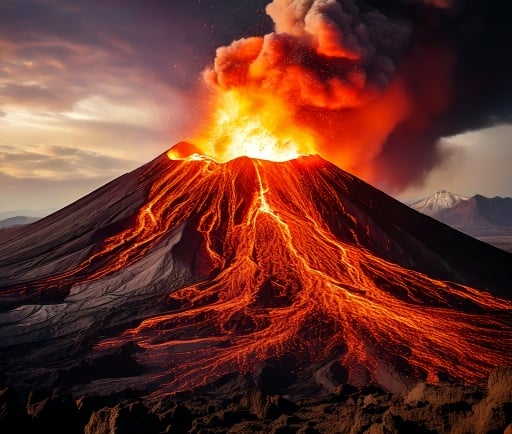The Nyiragongo Stratovolcano: A Study of its Active Lava Lake and Geological Significance


Introduction to Nyiragongo Stratovolcano
Nyiragongo, located in the Democratic Republic of the Congo, is one of the most iconic stratovolcanoes in the world. Renowned for its remarkable features, the volcano is best recognized for its unique lava lake that resides within its summit crater. For over fifty years, this active lava lake has been a subject of both fascination and study due to its impressive dynamics and potential hazards. This article explores the characteristics of Nyiragongo and the catastrophic events surrounding the draining of its lava lake.
The Active Lava Lake: A Geological Marvel
The lava lake at Nyiragongo is one of the few permanent lava lakes on Earth. This lake is characterized by its persistent activity and consistent flow of molten rock. The lake's surface is often turbulent, exhibiting various forms of volcanic activity, including bubbling and spattering. The presence of this lava lake not only demonstrates the volcanic activity of Nyiragongo but also plays a crucial role in our understanding of volcanic behavior and aerodynamics.
For around half a century, the lava lake has been an essential factor in the geological landscape surrounding the volcano. This prolonged activity influences local ecosystems and contributes to the area's mineral deposits, creating a unique interaction between the volcanic activity and the surrounding environment. Observations of the lake have allowed scientists to study its chemical composition and the processes that govern its behavior, furthering our understanding of similar volcanic systems worldwide.
The Catastrophic Drainage of the Lava Lake
One of the most significant events in Nyiragongo's recent history was the catastrophic draining of its lava lake. This event, which took place in 1977 and again in 2002, resulted in the rapid emptying of the lake's contents. Such dramatic drainage poses considerable risks not only to the immediate environment but also to the communities located nearby. The outpouring of lava during these significant drainage events led to widespread destruction and highlighted the volcano's potential for devastating eruptions.
The aftermath of the lava lake's draining serves as a stark reminder of the unpredictable nature of volcanic activity. Communities living in the shadow of Nyiragongo are aware of the ever-present threat posed by the volcano, making it crucial to implement effective monitoring measures. Ongoing research in the region aims to better predict future volcanic activity and mitigate hazards that threaten local populations.
Conclusion: The Importance of Monitoring Nyiragongo
In conclusion, the Nyiragongo stratovolcano, with its active lava lake and the historical significance of its drainage events, serves as a vital subject of study within volcanology. Understanding the behaviors of such volcanoes not only enhances our geological knowledge but also informs risk management strategies for the communities that coexist with these magnificent yet dangerous natural phenomena. As research continues to advance, it is paramount that we maintain a focus on monitoring and understanding the ever-evolving dynamics of volcanic systems like Nyiragongo.
